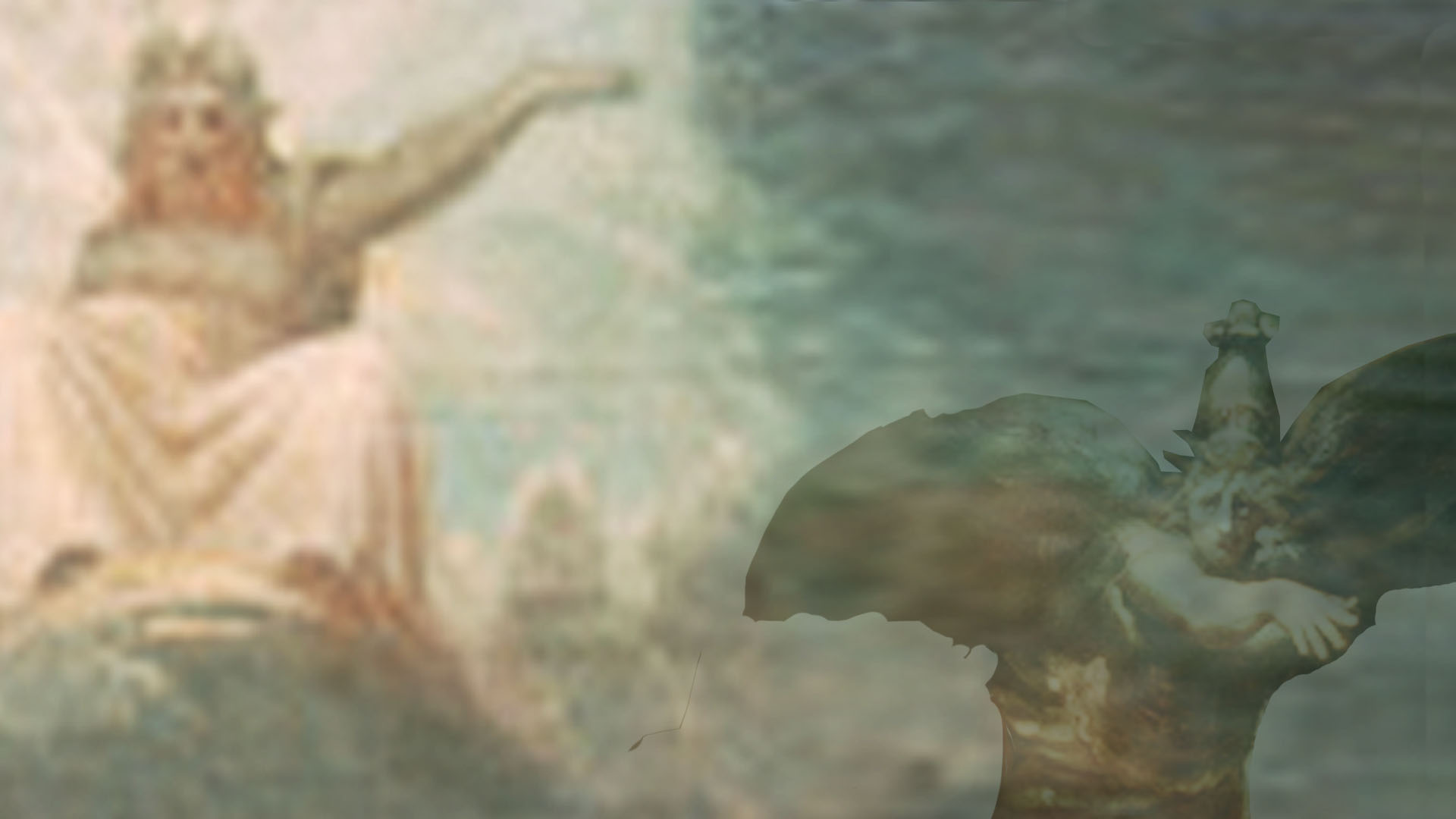
The Momentum of Gesture in Art und Religion (9)
In his painting of the triumphant Messiah, Johann Heinrich Füssli has an angelic figure rush towards the viewer with an outstretched hand. Füssli shows the Messiah enthroned in the background with a peculiar gesture of rejection. A gesture that the falling angel seems to embody, as if it gave him a slightly different direction. But not all artistic representations of the Messiah are as dynamic as Füssli’s 1802 painting.
In her video installation Malka Germania (Queen Germania, 2021), Yael Bartana has the Messiah enter Berlin walking at a measured pace. Like the figure of Jesus in Pasolini’s film The First Gospel of Matthew (Il Vangelo secondo Matteo, 1964), Bartana’s Messiah figure is peculiarly motionless in her movements, restrained in her facial expressions and gestures. Perhaps we need the Messiah compositions of Handel and Mozart and the choreography of John Neumeier (premiere Hamburg 1999) and the staging of Robert Wilson (premiere Salzburg, 2020) to get to the bottom of what moves the Messiah?
Is it possible to imagine the Messiah dancing? Perhaps that is not possible because the angels themselves are rather gestures – and the Messiah is also a momentum of history. Perhaps it takes the artistic representations of the Messiah and the gesture he embodies to understand the gestures of the angels.
With the Messiah not only the invitation of God appears to let go of that which chains people to toil and burden. The Messiah is not only a gesture that accompanies a call. The Messiah is above all a skillful gesture (geschickte Geste) that testifies to a presence of mind that neither an angel, nor a prophet, nor a priest, nor the liturgical office, nor a sacrament itself exhibits. And this gesture is also the invitation to release to the use (χρη̑σις) of the calling (κλη̑σις) that goes forth with it those who fancy themselves called (berufen), called (aufgerufen), and called forth (herausgerufen) to be governors (Statthalter) of God on earth (ἐκκλησία).
The Messiah embodies the spirit of invitation, therefore, like the Spirit, he is Inviter – Paraclete and Prosklet at the same time. It revolves around the same gesture that is still used today to ask for a dance, “May I ask?” (παρακαλώ – Μπορώ να έχω αυτό το χορό; “παρακαλεῖν” means “to summon”, “to invite”). The paraclete (παράκλητος) is thus both the “invited” and the “inviting” (πρόσκλητος).
The Paraclete, the Holy Spirit (ὁ δὲ παράκλητος, τὸ πνεῦμα τὸ ἅγιον, John 14:26) is personified by Jesus (1 John 1:2). Whatever the history of interpretation may compel us to see in the pneumatic event an administrative act: The Paraclete is not primarily an “administrator,” (Sachwalter) or in Luther’s translation an “advocate,” (Fürsprecher) or even a lawyer or advocate, as the English translations of the Bible interpret it. Such things belong to the understanding of the Last Judgment as a trial made to men. But it needs art to understand that the Paraclete transmits the invitation to another “procedure”.
For while the church makes people believe that life is a procession to the Last Judgment as a gate to hell or a door to heaven, the Messiah, through the art of skillful gesture (geschickte Geste), extends a very different invitation. It is not a question of a summons to judgment, which is painted out to believers, but an invitation to that change of direction in the crisis. Thus, the gesture of the adjuster (Richter) is not a gesture accompanying the pronounced judgment and certifying it. It is rather a gesture that points to another direction and to another alignment: Thus, in the crisis (κρίσεως), an action becomes possible as if there were not (hos me, ὡς μὴ) crisis. That the Messiah holds judgment on people at the end of time (chronos) is a the common form of interpretation of biblical texts. That he sets things right, realigns things, in the present time (kairos) is testified to by another reading of Paul’s letters, especially the apostle’s letters written to the Romans and Corinthians.
The Messiah is the envoy (Gesandte), the ambassador, the messenger who invites people with a reconciling gesture to a reorientation of their actions, not to their execution. This gesture is the momentum of a movement in which, at the same time, the wall is literally torn down, erected by Pharisees of whatever kind, that wall erected to prevent the faithful from feeling the breath of reconciliation, the breath of God, the Ruach and the Pneuma that animates and animates. In this respect, the mystics were right to seek and experience direct contact – and not to be kept away from ecclesiastical enclosures by which the spirit is to be protected from too much closeness by the believers, or vice versa.
But if one follows the invitation of the art, if it represents the Messiah as a paraclete of the spirit with a skilful gesture (geschickte Geste), then this shows a change of direction in the time of the crisis, the time of the apocalypse: it is for example Christo’s veilings that show themselves as if they were not veilings. Those who were able to experience the covering of the Berlin Reichstag by Christo and Jeanne Claude had the experience of the as if not (ὡς μὴ) Reichstag. It is precisely this experience that Paul addresses in his letter to the Corinthians when he describes the time of crisis as condensed time (καιρὸς συνεσταλμένος). The present time, in which for those who use the passing world, as if they did not need it (καὶ οἱ χρώμενοι τὸν κόσμον ὡς μὴ καταχρώμενοι- παράγει γὰρ τὸ σχῆμα τοῦ κόσμου τούτου, 1. Corinthians 7:31). Every momentum of art is such condensed time, in which the useless appears as if not useless.
Robert Krokowski